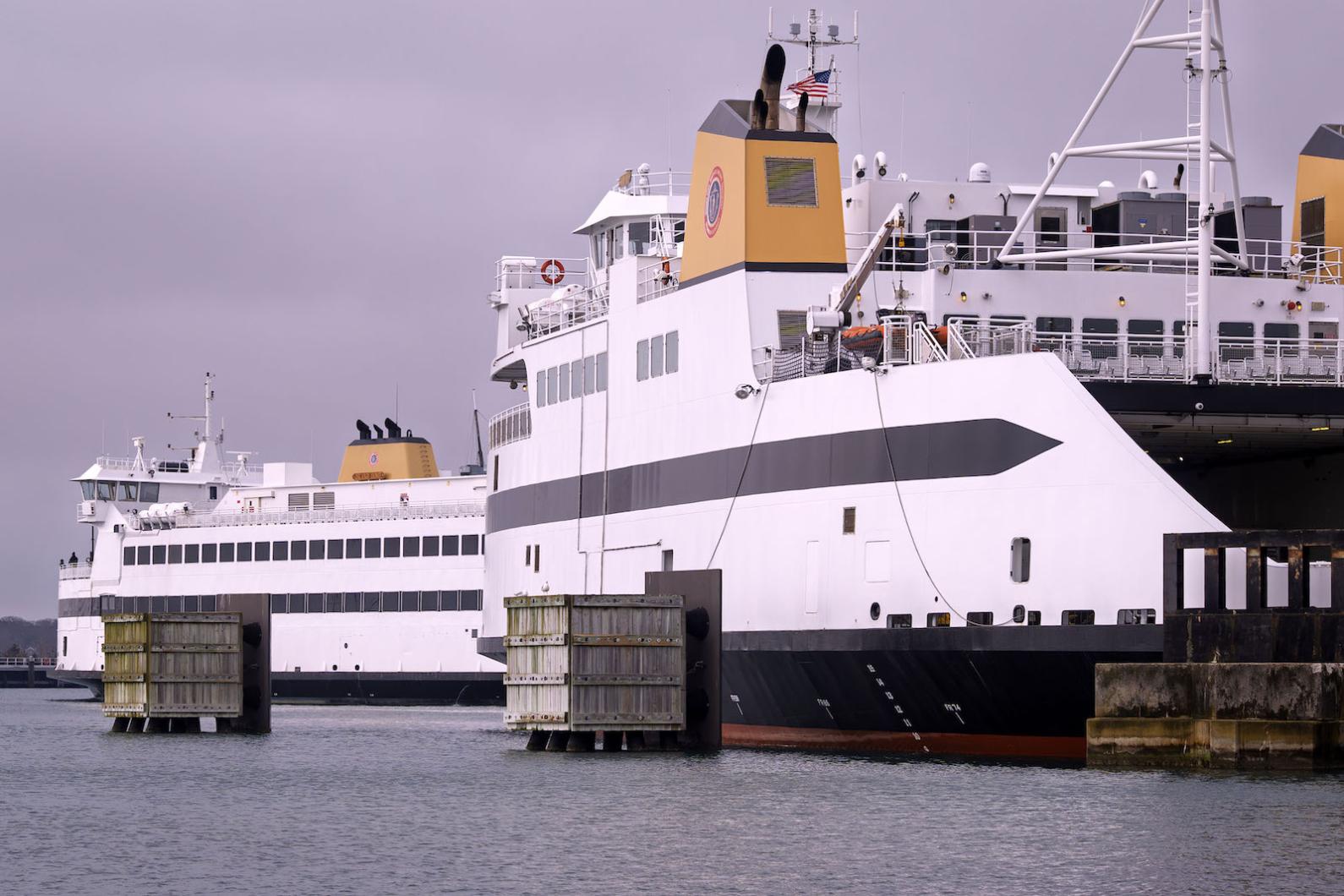More than three years after the Steamship Authority began investigating the potential for electrified ferries, the boat line is no closer to reducing its dependence on diesel fuel.
The SSA, which is required by state law to fund its operating budget from ticket sales, would need tens of millions of additional dollars to develop its first hybrid or all-electric ferry and charging system, ferry line officials said this week.
“This will be a heavy lift for us,” general manager Robert Davis said at Tuesday’s monthly meeting of the boat line board of governors.
A 2022 study by Seattle-based Elliott Bay Design Group found that the regional electrical grid does not have enough power to charge electric ferries.
“We’d be effectively browning out the villages if we were to do it that way,” Mr. Davis said.
An alternative system that would trickle-charge the vessels was estimated in 2022 to cost between $10 million and $12 million, he said.
The Steamship Authority has been applying for grants aimed at reducing diesel pollution, but so far has not received any, Mr. Davis said.
“We continue to try,” he said.
Board chair James Malkin said the present federal administration is unlikely to lend a hand.
“Given the current environment in [Washington] D.C., I think we have an opportunity to take some time and examine what the best options are for the Steamship Authority to look at alternative energy going forward,” said Mr. Malkin, who represents Martha’s Vineyard on the Steamship board.
Regardless of funding issues, Mr. Davis said Elliott Bay Design Group is now determining the SSA’s emissions across all its operations, including buses, as of the year 1990.
That is the baseline year specified by the state of Massachusetts in its decarbonization goals, which call for an 85 per cent reduction in emissions by 2050.
After establishing the 1990 baseline, Mr. Davis said, the next step would be to explore converting an existing Steamship Authority vessel to hybrid or alternative propulsion.
Electric ferries are not yet widespread, he said, noting a recent nationwide vessel census that found just four electric ferries operating in the United States.
Washington State Ferries, which has the largest ferry fleet in the country, expects to have its first hybrid-electric vessel go into service in 2029. That ferry service, which, unlike the Steamship, is part of the state department of transportation and receives tax dollars, has already secured more than $1 billion for conversion of its vessels.
Among other business Tuesday, the SSA board voted to continue the Islanders-only standby service for same-day travel, known as the blue line, through the rest of the year.
Since it was introduced in January, the blue line has been used more than 800 times by motorists leaving the Vineyard on excursion fares and more than 400 times to return from Woods Hole, director of shoreside operations Alison Fletcher told the board.
Only Island-based vehicles that are registered for the Steamship Authority’s excursion rates are eligible for the blue line. All others must travel by advance reservation at full fares.
The system has been received well by Islanders, Ms. Fletcher said, except in cases where they did not understand the nature of the blue line.
“We have had numerous customers be confused [and] think it’s automatically going to get them onto the next boat,” she said.
“We have to continue to push out the education on the blue line, so people know that it’s not a guarantee,” Ms. Fletcher said.
The Steamship Authority also has introduced a call-back system so that people in the blue line may leave their cars to shop or eat, knowing they’ll be called when they need to be back in the line.
The boat line is limiting standby travel to reduce congestion at the Woods Hole terminal during its final year of reconstruction, Ms. Fletcher said.
The Vineyard Haven terminal was slated for transfer bridge replacements this year, but that work has been postponed, she said.
Also Tuesday, the board of governors heard an update on planned repairs to a berthing dolphin in Nantucket that got bumped by a ferry earlier this month.
After spending $32,000 for an underwater inspection by divers, Mr. Davis said, the structure was determined to be sound from the water surface to the seabed.
Damage above the waterline will be repaired next month, and the Steamship Authority also will inspect all of the other dolphins at the Nantucket terminal as a precautionary measure, he said.
The offshore dolphins, which serve to extend the berthing area, are subject to knocks and bumps as ferries make their way to and from the slips, Mr. Davis said.
The governing board also received a report on the SSA’s annual financial audit by the firm RSM US.
Auditor Valerie Coleman said the Steamship Authority fared well overall, but needs to tighten up its data access for employees.
“The access levels were inappropriate for certain individuals [and] that did cause us to have a little bit of a red flag,” Ms. Coleman said.
“We went through the process of asking, were those individuals able to manipulate and change anything? [But] there was no manipulation of data that was found,” she said.






Comments (19)
Comments
Comment policy »